Pitt Football Offensive Preview
After 58 years, Pitt finally gets a chance to avenge their devastating loss from 1966.
The last time these two teams played, Pat Narduzzi was 6 months old and Justin Wilcox wasn’t even born yet. Pitt was an Independent, and Cal was a member of the Athletic Association of Western Universities (the proto-Pac-8). Pitt’s former coach and current athletic director at the time, the retired Admiral Thomas J. Hamilton, was actually pivotal in the AAWU’s formation and its founding commissioner. Hamilton originally envisioned a national power conference that would join the five big west coast schools (Cal, Stanford, Washington, USC, and UCLA) with other academically-oriented schools, including Army, Navy, Air Force, Notre Dame, Pitt, Penn State, and Syracuse—colloquially known then as the “Airplane Conference.” The deal fell through after a Pentagon official vetoed the idea and the service academies backed out. Pitt was ahead of its time envisioning super-conferences, but they clearly recognized that inviting Cal to join their conference would immediately make that conference a national powerhouse super-conference, so they’re obviously pretty smart over there.
Nowadays, Pitt is led by defensive-minded head coach Pat Narduzzi, now in his 10th year at Pitt. Narduzzi led Pitt to an ACC Championship in 2021 with quarterback Kenny Pickett (whose fake slide in the ACC Championship game that year led to the changing the QB slide rule, seen here: https://twitter.com/SInow/status/1469141184173916162).
Narduzzi is now on his 6th offensive coordinator, Kade Bell. (Hmm, a defensive-minded head coach who keeps looking to new offensive coordinators after anemic offenses year after year). The job vacancy isn’t really a surprise after the 2023 Pitt offense was the worst in the ACC (116th/133 in the FBS) as Pitt posted a 3-9 season. Kade Bell was previously the offensive coordinator at FCS Western Carolina, who he led to a top-10 offense. Pitt runs a very fast, uptempo offense. Pitt rarely lets more than 15 seconds tick off the play clock, and they will immediately rush to snap the ball after any big play to try and keep a defense on their heels.
Bell brought along three players from WCU that would all feature prominently in this year’s offense at Pitt: RB Desmond Reid, WR Raphael “Poppi” Williams Jr., and WR Censere “CJ” Lee.
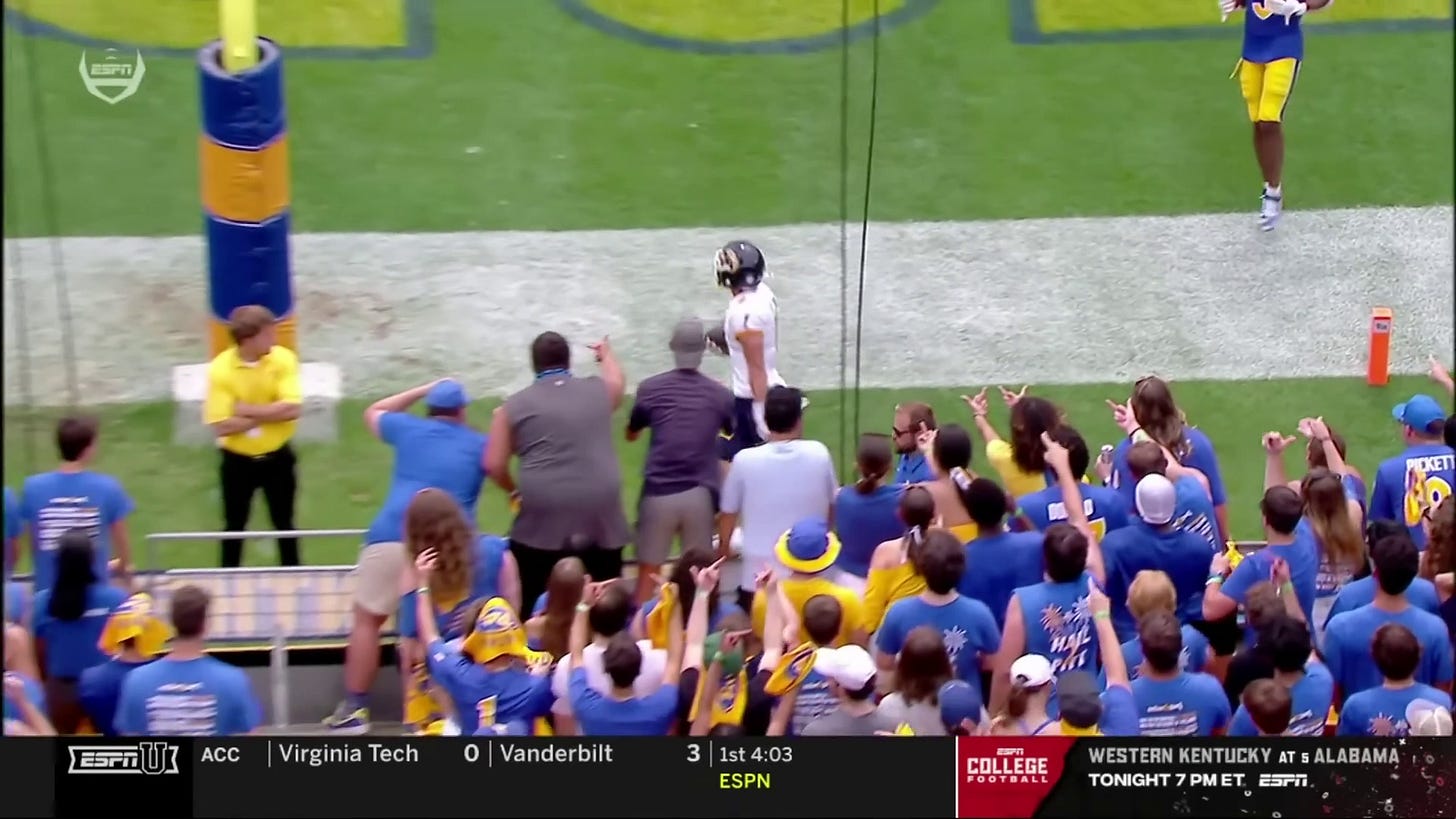
Another impact transfer this year is the redshirt freshman quarterback, Eli Holstein, who somewhat shockingly came in and took the starting job from the presumed starter. I can’t quite put my finger on it, but something about this guy just screams “Pittsburgh”:
Let’s take a closer look at the positional breakdowns.
Quarterback
Pitt is led by the Alabama transfer and redshirt freshman Eli Holstein. He has prototypical NFL size, and aspires to be like Buffalo Bills QB Josh Allen: "A big, strong-armed dude that’s freakishly athletic for his size". Before committing to Alabama’s Nick Saban, Holstein was a hyped quarterback recruit with offers from pretty much everyone: Georgia, Ohio State, LSU, Oregon, etc. Holstein competed at the Elite 11 in Las Vegas and set a new record SPARQ rating for a quarterback (e.g. 40 speed, jumping, lateral agility, etc), showcasing that his athleticism is indeed elite, and with strong enough arm to show that he’s a high-ceiling player. Despite Holstein has documented athleticism, he’s more of a scrambler looking downfield than a tuck-it-and-run type of player. And although Holstein has a strong arm, he is most accurate on short to intermediate throws.
The part of Holstein’s game that I am most impressed with is the touch he is able to put on balls. Holstein excels in “drop in the bucket” throws:
Although Holstein will often wind up on deep throws, he does a great job of targeting a spot in the field, placing the ball where only his receiver can get it:
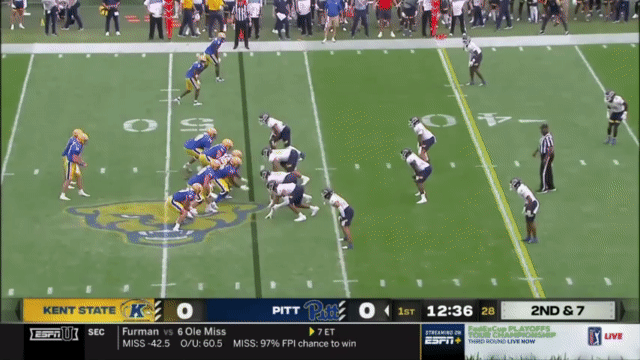
Holstein also shows consistent throwing mechanics, and does not have a tendency to occasionally sail throws like Cal’s previous two opponents. Holstein’s height and high release point make it hard to bat down his passes at the line of scrimmage and allow him to fit throws over defenders:
Another of Holstein’s best attributes is his ability to stay calm and poised in the pocket, keeping his eyes downfield under pressure, and making good decisions on when it’s time to scramble:
Holstein does a good job of reading the field, and can make a defense pay when they leave him unattended in the run game:
And again:
Pitt will also use Holstein on designed QB run plays:
Because of Holstein’s size and running ability (and willingness to take a hit), Pitt also ran a few QB Power plays last week against North Carolina.
Here Holstein catches the defense off-guard with an empty backfield on 3rd and long:
Holstein does a much better job of making full-field reads than most freshmen quarterbacks I watch, but he can sometimes overcorrect into “taking too long to make a decision” territory. He can be indecisive and hesitate on throws, which allows defensive backs the opportunity to catch up and make a play on the ball:
Most of Holstein’s good throws have come from a clean pocket. He hasn’t shown as much success throwing under pressure this season:
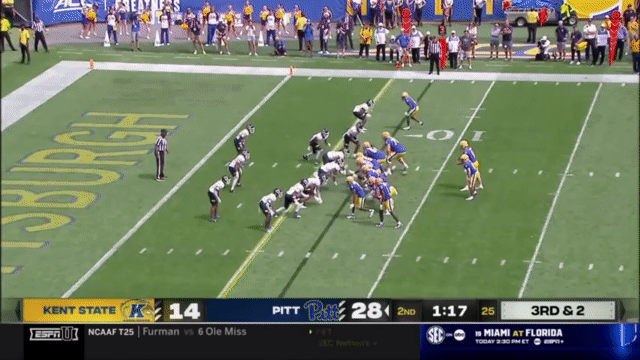
Holstein’s strong arm allows him to make good throws on the run, although my evaluation of this throw depends on who the intended receiver really was here:
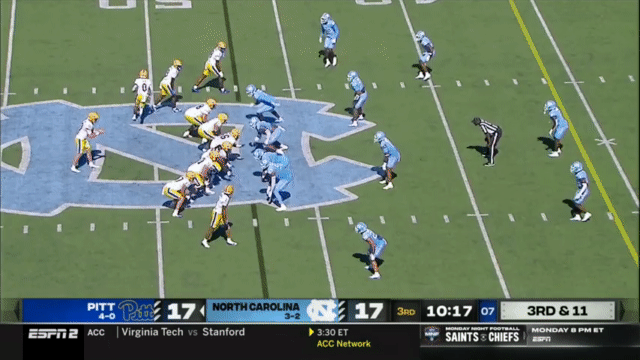
Holstein also hasn’t shown an ability to move the defense with his eyes. Here he locks onto his read and never sees the safety coming over to make a play on the ball:
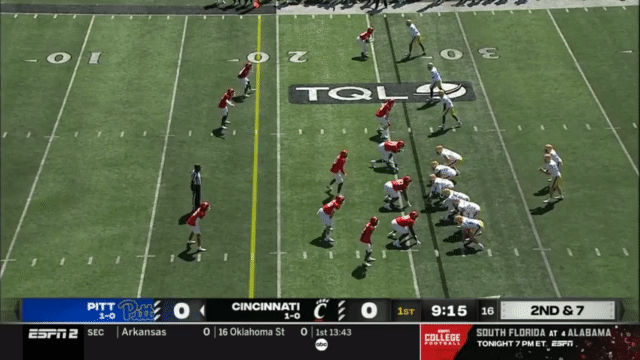
Holstein’s confidence in his arm strength has also resulted in a number of poor reads on out routes, and he would have more interceptions like the following if it weren’t for drops by opposing defensive backs:
Holstein is a mobile pro-style passer who will look to take deep shots downfield, but this game will be the first real test of Holstein’s quarterback vision at the college-level, as the Cal defense has the ability to make him pay for poor reads in a way that earlier opponents did not.
Running back
Although Pitt is currently top 10 in the FBS in passing yards, the real key to their success is their star running back, Desmond Reid. Reid has been a little banged up in recent weeks and is currently questionable for the Cal game, which would represent a huge loss for the Pitt offense.
Desmond Reid is the focal point of the offense; much of the offense is predicated on the attention that Reid commands from opposing defenses. The 5’8” 175 lbs. running back is an explosive athlete, and he’s able to break off homeruns in both as a runner and as a receiver. His speed makes him a mismatch for linebackers trying to cover him on routes out of the backfield. Coverage defenders need to give him a big cushion due to his speed, but he’s also very shifty and elusive in open space which makes him difficult to bring down. As a result, Reid is responsible for a number of explosive plays: in 4 games, Reid has 9 plays of 20+ yards, and 3 plays of 45+ yards. Despite playing just 4 games (and dealing with injuries during some of them), Reid is currently 2nd in the FBS in all-purpose yards, trailing only Boise State’s RB Ashton Jeanty.
Here he has a one-on-one matchup with the safety and makes him miss:
Reid is shifty and shows great change of direction abilities. Here he dodges another tackle for a nice gain:
Reid also has nice balance, managing to stay upright through contact with the defender:
Even on a busted play, Reid forces a missed tackle and turns it into a positive:
Reid is just as dynamic of a threat as a pass-catcher. He’s a mismatch for any linebacker that tries to keep stride with him:
Here Reid blows past the defensive backs in zone coverage:
And if that wasn’t enough, he’s obviously a problem on special teams as well:
The downside for Pitt is that they rely so heavily on Reid for his play-making abilities that he’s getting banged up. He left last week’s game against North Carolina early, but even before that, he was often seen grabbing his leg in pain after tackles (although he would refuse to come out of the game). Reid even sat out of their matchup against an FCS team to take an extra week to recover. Sounds familiar, doesn’t it?
It’s less clear who the backup will be behind Reid (especially if he’s out with an injury) as QB Eli Holstein is actually the team’s second leading rusher. Early indications would point to Rodney Hammond Jr., who was initially ruled ineligible for the season, but made a return to the team last week against North Carolina (so whatever was causing him to be ineligible has since been resolved).
Hammond Jr. is a more powerful back, but he has also showed some nice moves in the open field:
Here Hammond Jr. makes a great cut and uses his speed to get all the way to the endzone:
Daniel Carter is the team’s biggest running back and runs with more of a power-running style:
Carter also showed enough speed to beat the safety who took a poor angle on him:
And again he used his speed to break off another touchdown run:
One drawback Carter might have in finding his way to the regular rotation was his pass-blocking:
There’s also Derrick Davis Jr., who showed good vision in his brief amount of playing time:
Lastly, someone to keep an eye on is former track star Che Nwabuko, who was recruited to Pitt as a 4-star wide receiver but is now listed as a running back, and he showcased his obvious speed here:
Look for Desmond Reid to be the swiss army knife for this offense, and if he’s not playing, expect the quarterback Eli Holstein to take at least a chunk of those designed runs. Pitt has not relied very heavily on the RB rotation so far this season, but they will need to find some alternatives to Reid if he continues to take a punishing load of the carries.
Receivers
Holstein has done a pretty good job of distributing the ball this season, with 5 different receivers (or 4 WRs and 1 RB, to be specific) having 20+ targets so far this season. But the slight edge goes to Konata Mumpfield, the outside receiver, likely for his penchant for running go-routes down the field:
Mumpfield is a sharp route runner, and does a great job of selling his routes:
Mumpfield has good short-area speed and acceleration, but he usually doesn’t create a ton of separation from his speed alone. However, he’s shown a willingness to make catches over the middle, and he does a good job of using his arms to create separation on deep routes.
On the other side of the field is Kenny Johnson. Johnson has an extensive route tree, and can be seen running the complete route tree to all the different parts of the field. Like Mumpfield, Johnson is also a deep threat down the field, and gets enough hesitation on his double move to get open deep:
Johnson is a reliable target and has shown good hands:
Behind Johnson is the Western Carolina transfer Censere “CJ” Lee, another crisp route runner with speed:
And wouldn’t you know it, he’s also a reliable target with good hands:
In the slot is the other Western Carolina transfer receiver, Raphael “Poppi” Williams Jr. Although a bit undersized, he’s also a very good route runner with run-after-catch ability:
Williams does a nice job of catching with his hands away from his body, and he’s yet another reliable receiver for Holstein:
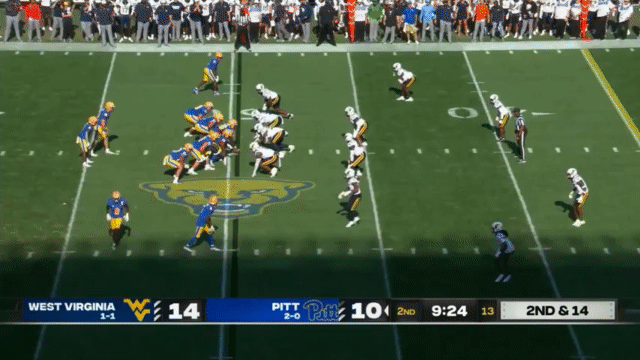
The tight end, Gavin Bartholomew, is a solid blocker with prototypical TE size (6’5 250 lbs), but he hasn’t made too much of an impact on the passing game so far this season. He shows a lot of versatility lining up all over the field (inline, the slot, out wide, at H-back, etc), and he’s often used in run-blocking situations. Here’s an example where he takes the handoff on a jet sweep:
As a receiver, he’s generally trying to find the soft spots in zone, as he’s not particularly effective in getting separation in man coverage, and his route running isn’t as crisp as the other wide receivers. He has shown some after-catch ability:
I just get the feeling that all his blocking in earlier games was to set up a play where he fakes a block before leaking out on a route, anticipating that the defenders will lose track of him in coverage, so I wanted to cover him here.
The receiving room is filled with a lot of moderately good players, but there isn’t anyone that obviously stands out one way or the other. I didn’t see many drops or bad plays, but I also didn’t see anything truly exceptional to make me say that such-and-such player has NFL potential (game-breaking speed, contested catch ability, etc). Instead, it’s a well-coached group that does a lot of the fundamentals (route running, releases, body control, etc) right.
Conclusion
Although Eli Holstein is a gifted and talented quarterback, he’s still young and prone to mistakes. Desmond Reid is an explosive player, but like Ott, he likely isn’t at 100% this week. Pitt’s receivers are good, but there’s no one that truly stands out like some of the receivers Cal faced in recent weeks. On defense, Pitt generates most of its QB pressure from exotic blitzes, simulated pressure, and trying to keep the opposing quarterback confused as to where pressure is actually coming from (sound familiar?). I haven’t been terribly impressed with their lines, and their secondary is prone to giving up explosive plays on busted coverages. Cal is done with the most daunting part of their schedule, and I feel like Cal will have the talent advantage the rest of the way through. Pitt may be ranked and undefeated, but I would be shocked if Cal did not have a big bounce-back game here. Other than a complete mental failure by the Cal team, I struggle to see what could go wrong for Cal here. I might end up regretting these statements, but this is just what I see.
Go Bears.
You can find my full clips here.


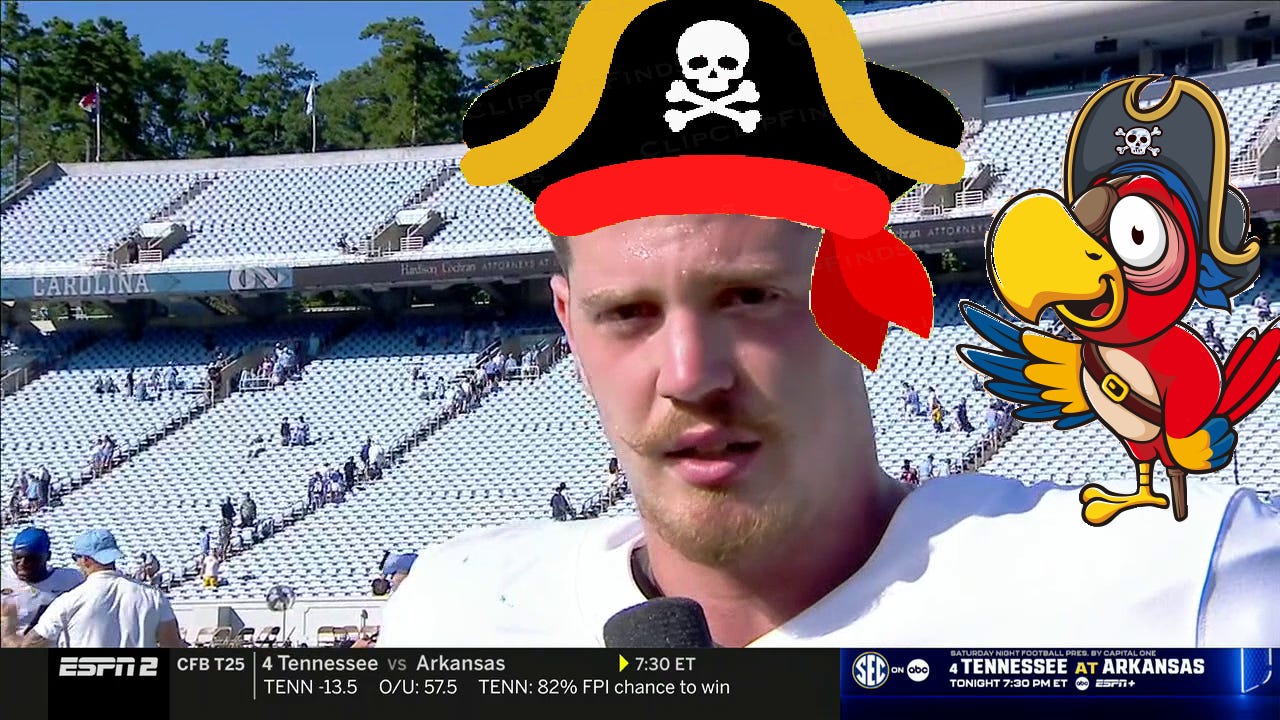
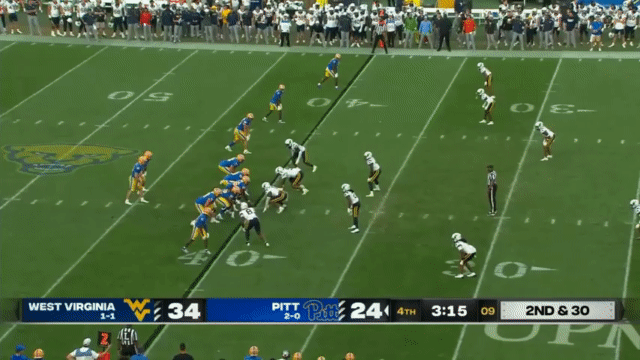
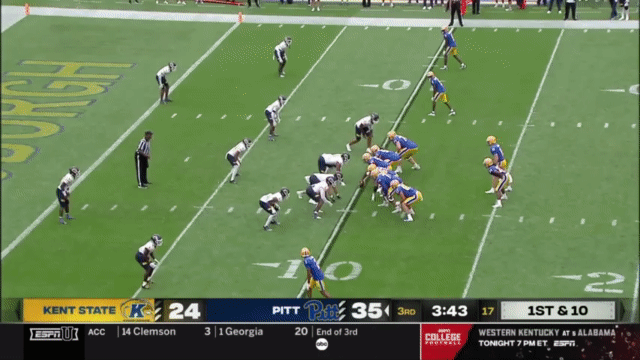
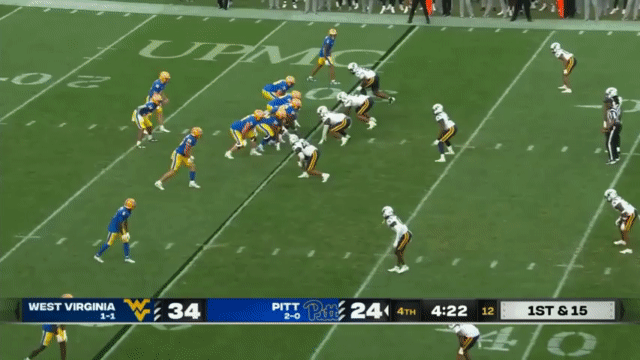
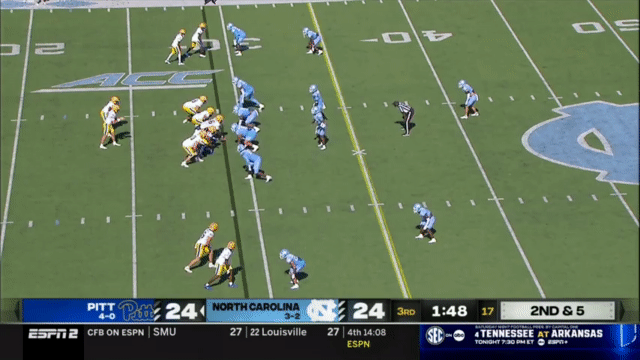
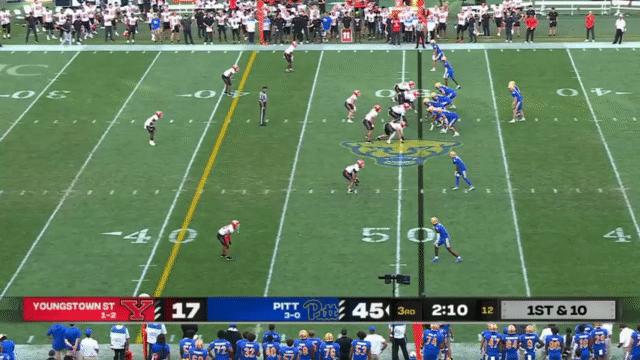

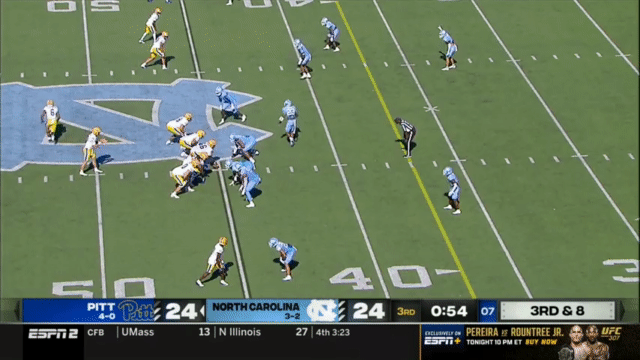
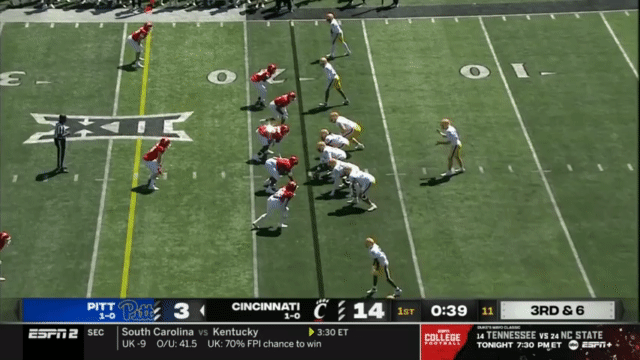
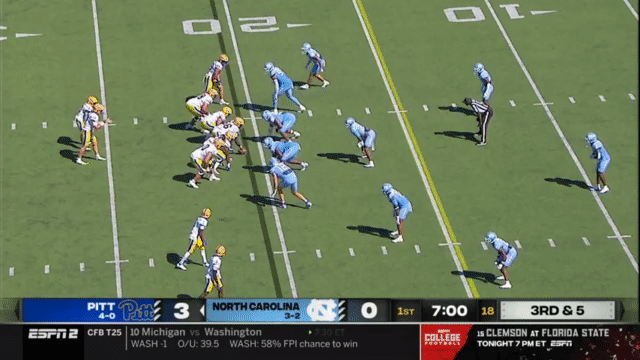
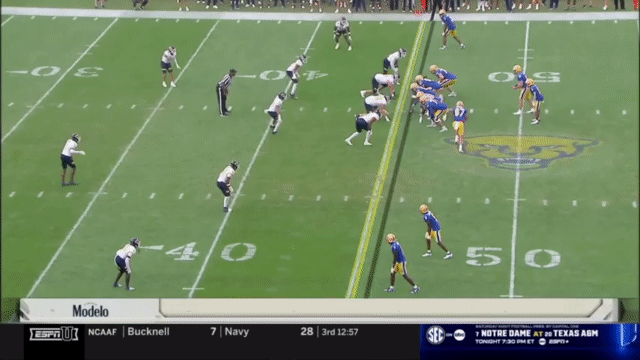
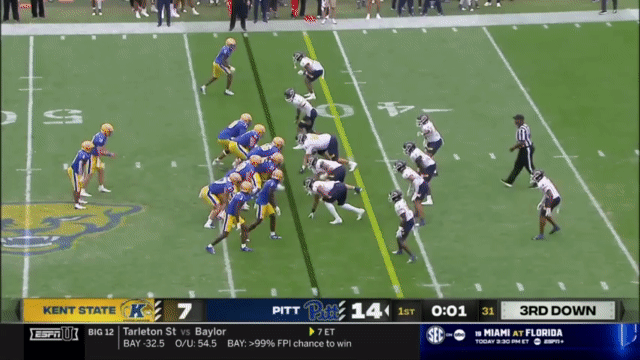
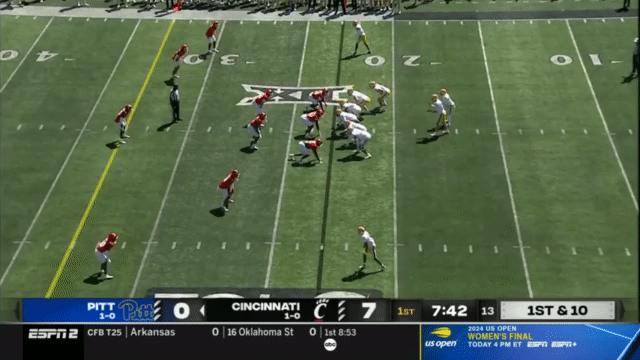
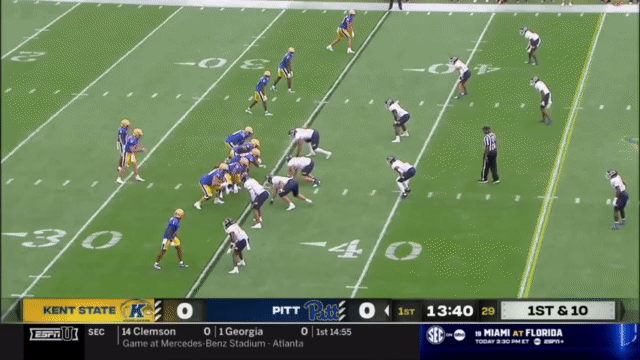
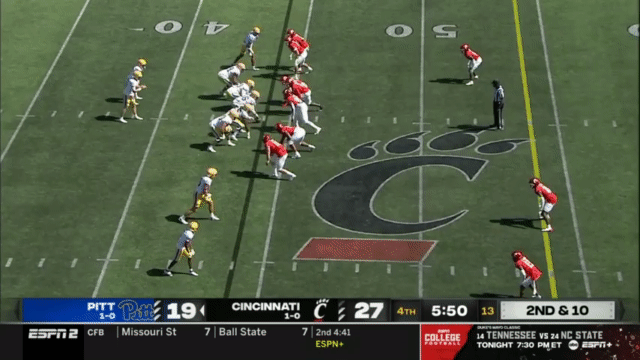
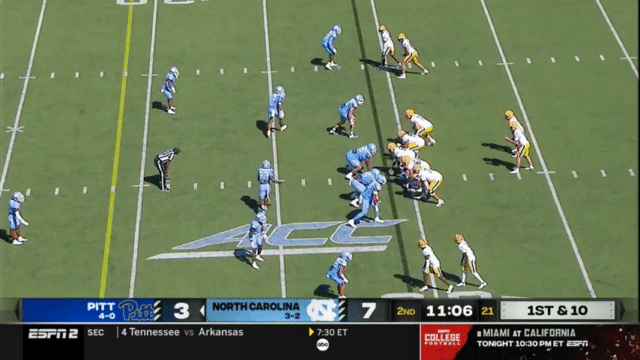
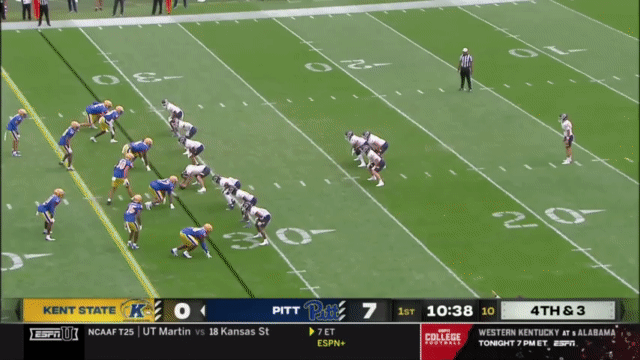
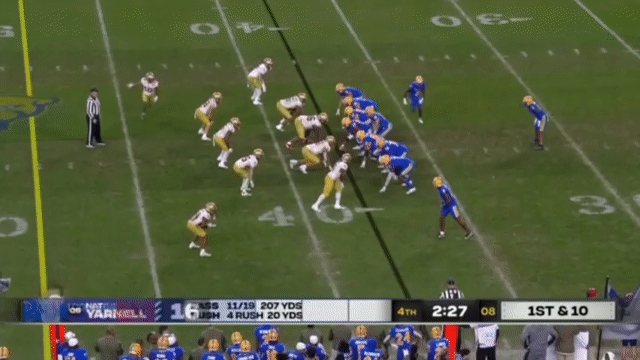
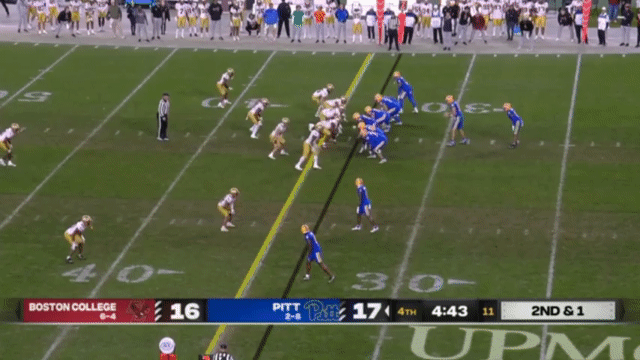
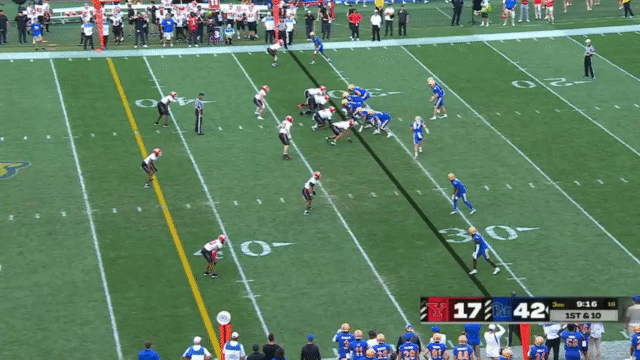
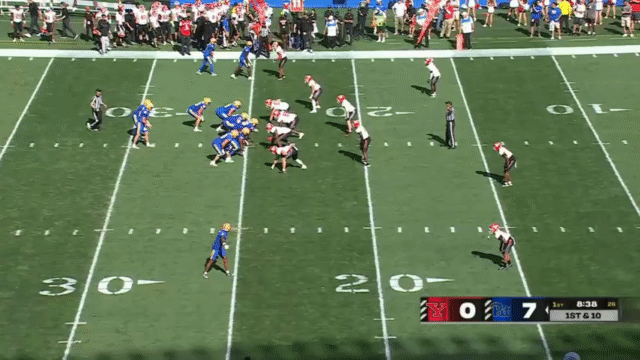
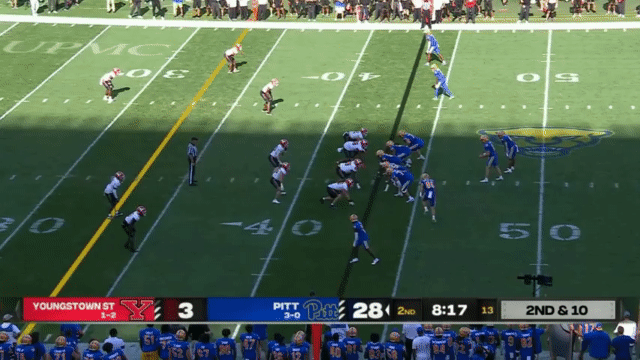
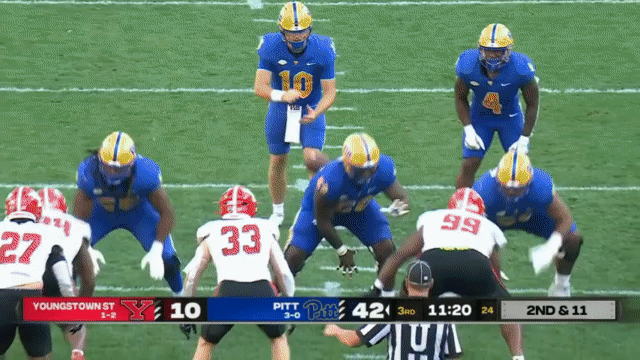
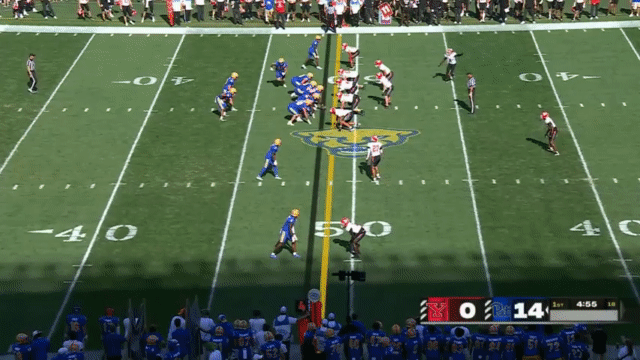
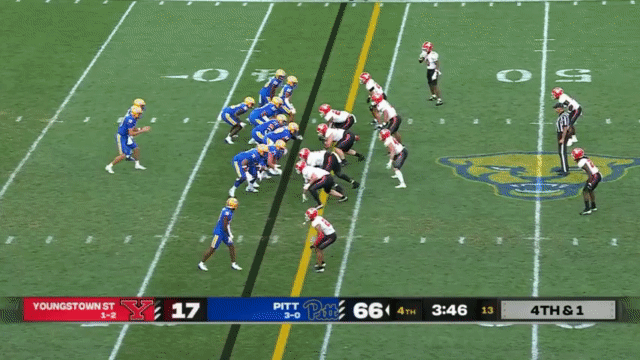
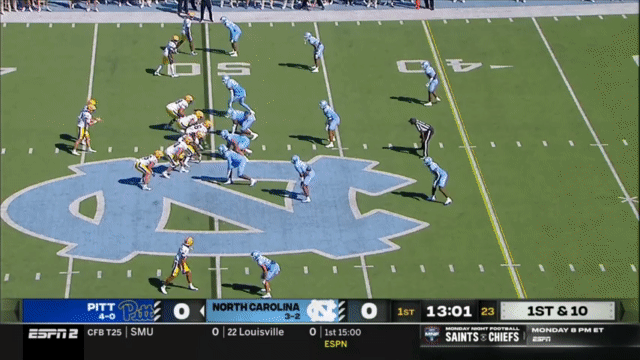
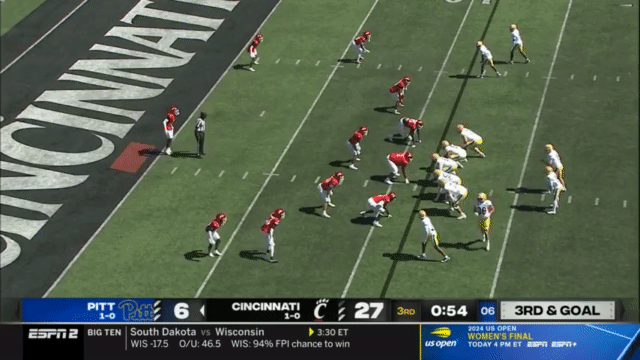
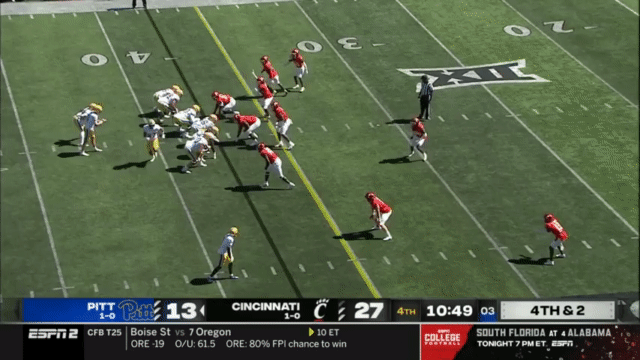
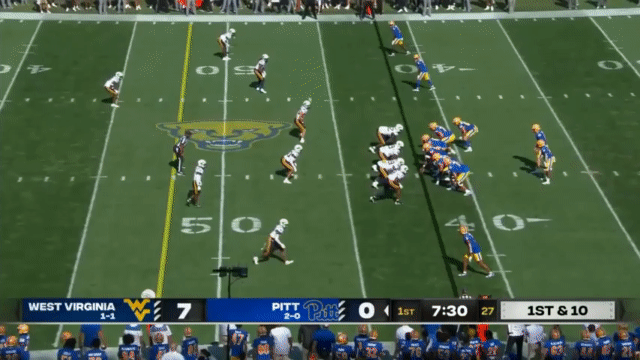
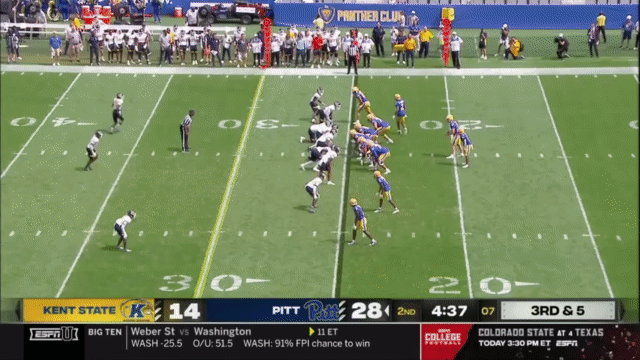
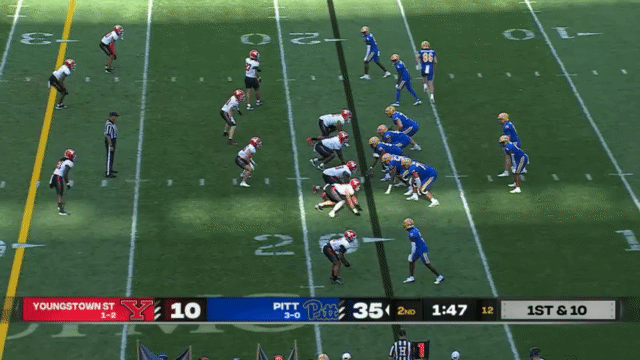
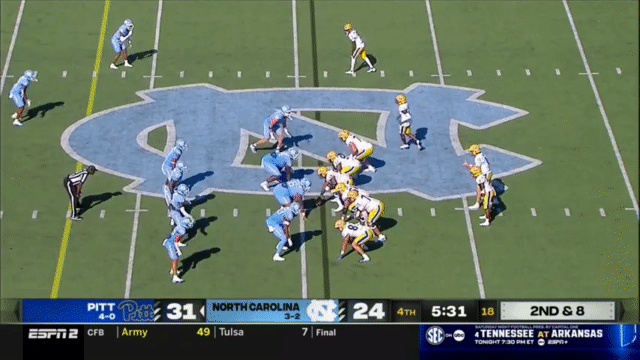
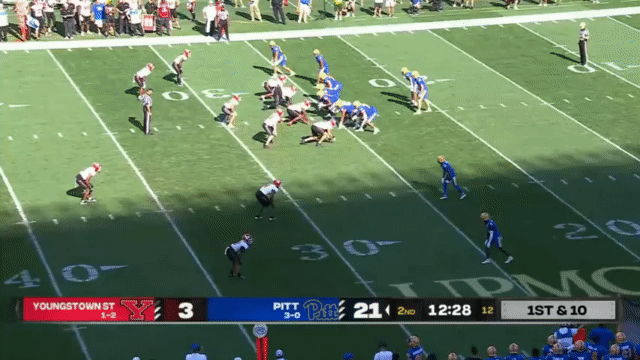
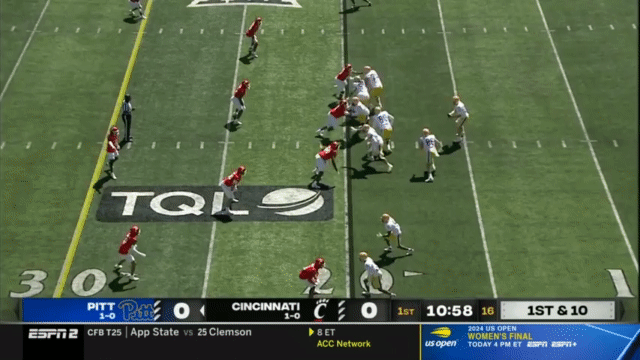
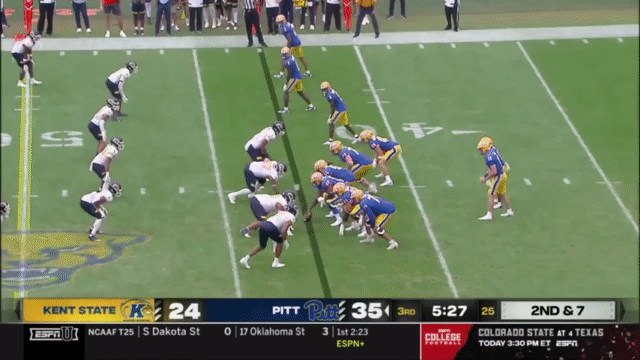
I feel like I'm in an abusive relationship with cal football... I'll forgive you for what happened last saturday if you win this next one...
My default Cal stance:
"I have a bad feeling about this."
Honestly, we need to use all our Jedi mind tricks on these away games. Think Auburn.
Any Eastern Bears making the trip to Pitt?